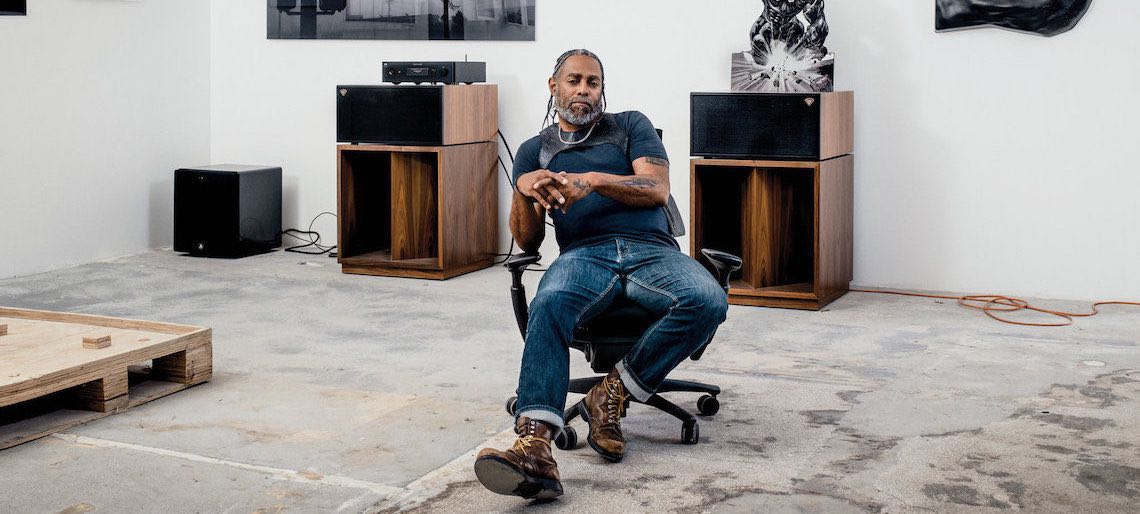Arthur Jafa recalls his first artistically directive experience in a lecture with the Perez Museum of Art in Miami. One of bemusement yet bewildering, 2001: A Space Odyssey offered a young Jafa a sense of disjuncture I am sure was by all felt in an initial encountering of the Kubrick classic. This may seem an odd point of departure for an artist rapidly coupled with an ostensible surgence in filmmaking centring Black bodies and experiences, acquaintance with his films demarcates this particular reference apropos. A true multi hyphenate and creative, Jafa is known for his uncompromising, boundary defying approach to video. With an oeuvre ranging from popular culture endeavours e.g. directing Solange’s acclaimed “Cranes in the Sky” and “Don’t Touch My Hair” (both 2016) to his 2019 Venice Biennale Golden Lion winning work The White Album, Jafa’s name is one of those most in demand in the world of visual culture. Just last week, the artist was again in the limelight for a collaboration with Kanye West for the video to the artist’s lead single, Wash Us in the Blood, off an upcoming album. This is an artist who doesn’t sit still and who’s next moves are eagerly anticipated.
The work traverses imagery and the visualisation of America in an eerie poesie that only a handful of Artists achieve. A salient voice whose concerns are those of constructions and propagations of the black aesthethic in the USA, Jafa challenges the dogmas and protocols of hegemonic cinema. Though, these are concerns that do not exist solely in a paradigm of ‘Black Art’. As all non-Black individuals ought to have learned from the Black Lives Matter mobilisation, so-called ‘Black issues’ are the issues of the wider society. His work compels the viewer to draw connections and observe the tributaries of societal themes from a diverse range of visual sources. There is something insidious yet ultimately pin-droppingly poignant about watching images of the fervent Gospel performance Nothing But the Blood by the Thomas Whitfield Company from 1992 followed by a mother and children forced from their car at gunpoint by white police officers on a highway. The “affective proximity” (an expression coined by fellow video artist John Akomfrah) principle regards a nebulous of conflicting actions coalescing in fraught, tense, contradictory fashion to gain newfound meaning. Jafa expertly uses this tactic, drawing themes and narratives from seemingly disparate sources to create an incredibly emotive compiled gestalt visual.
The seminal Love Is The Message, The Message is Love (2018) pulls the heartstrings in all directions. Simply essential viewing, the film transgresses traditionally Western material based art historical nomenclature of film making. From its offset, the melodic sounds of Kanye West’s gospel inspired Ultralight Beam (2016, The Life of Pablo) harmonises and fuels the journey Jafa undertakes conveying a curated visual history of Black experience of the last 100 years in America. His archival yet ephemeral sources roam the vernacular, the religious, the cosmic. It is difficult to vocabularise such a viscerally emotive film. The true importance of the film was cemented last month as 13 international art institutions (including the Smithsonian, MOCA Los Angeles, Tate and the Stedelijk in Amsterdam) made the film free to view for 2 days on their websites as an educational tool in art in response to the global Black Lives Matter protests and movement.
Jafa addresses an important topic in cinematic theory – the white gaze. Founded on the same principle of Laura Mulvey’s progressive yet one note theory of the ‘male gaze’ from Visual Pleasure and Narrative Cinema in 1975, Jafa addresses the constellation of a Black aesthetic and screen visualisation as product of purposeful White hegemony. Black cultural production remains appropriated by White majority regardless of authorship and ownership, an assumed and asserted dominance over Black people stemming back to slavery and colonialism. Jafa tackles this overshadowing of Black creatives and visionaries by compiling clips exhibiting such examples alongside the normalised verbal and physical violence inflicted on those same individuals and communities by White people in the US.
The tactfully orchestrated Apex (2013) is regarded as the precursor to Love is the Message in terms of sequence, though this assumption detracts from much of its own agency. Jafa demonstrates a process in Apex unlike any film I have seen before and as a result it is jolting to the point of not wanting to look away in fear of missing the part to tie scenes together. This organised chaos is bound up in the “spooky entanglements” Jafa speaks of, developing metaphor of horror and uncanny relating to race and performativity the longer the film goes on. Soundtracked by a trance inducing Techno beat, Jafa collides universes through a synchronisation of imagery including fish, planets and Black musicians. Each image has a reference, existing on its own yet always in comparison and acknowledgement of what precedes and succeeds. This film positions Black musicians and creatives at the centre, figures often marginalised with intellectual property and creative inventiveness taken from and stolen without remuneration. Jafa explains his process of gathering images from web searches after hours of scrolling, culminating at semi-ordered folders of images which “interest” him. Apex only bifurcates from the endless catalogue of potential ‘films’ on his laptop due to its release to the public.
I realise I will never truly understand the effect of such films on an empathetic level being nor Black nor American. The analysis and experience will perpetually exist from an outside looking in perspective. Jafa asserts this idea by describing Black cinema’s “reactive dimension” whereby “it’s hard for outsiders to see the full complexity of what’s happening”. This however does not detract from outsiders gauging and appreciating the emotional and semantical learning experience of a compiled of trauma, celebration, struggle and resistance exerted in Love is the Message. Dominant cinema – White screenwriters, White actors, White directors and White audiences – creates viewerships and productions accustomed to being primary focus and intent. Jafa makes the entitled viewer aware of their positionality and skewed sense of centralism when consuming media, and furthermore, in wider social conversations.
Without ‘moment-ising’ the recent events, Arthur Jafa is an artist who if you don’t already know, you need to get to know. His work has gripped, enthralled and probed a relearning in myself since my awareness of it. He is, for just reason, certainly not short of admirers. Crossing the line between ‘fine’, ‘high’ art and popular culture can be a contentious matter. This anachronistic binary truly maintains elitism though, which in earnest, is a tool of white supremacy. Jafa brings his trademark approach to a wider audience which certainly propels a message needed to be heard.
‘Immediacy of Arthur Jafa: An Oeuvre of Essential Viewing’ is an article written by Archie Gibbs. You can find more writing and information about Archie on his Website and on Instagram.

